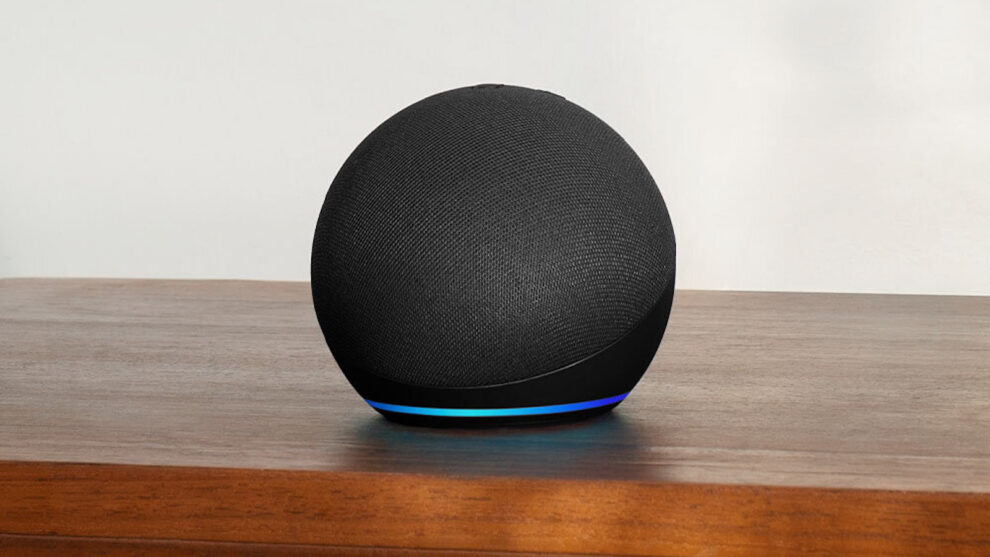Amazon Echo devices, powered by the Alexa voice assistant, have found a place in millions of homes worldwide. Many users primarily engage with their Echo for common tasks: playing music, setting alarms, or checking the weather. However, the true breadth of Alexa’s capabilities extends far beyond these basic functions. Hidden within its programming are hundreds of voice commands that can transform your interaction with your smart home, manage your daily life, and even provide entertainment in unexpected ways. This report dives deep into the less-explored facets of Alexa, revealing commands that can streamline your routines, enhance your security, and offer a richer, more personalized experience with your Amazon Echo devices.
Key Takeaways:
- Beyond Basics: Alexa handles hundreds of commands beyond music and weather.
- Smart Home Control: Manage lights, locks, and appliances with specific phrases.
- Productivity Boost: Set reminders, create lists, and manage your calendar by voice.
- Entertainment & Fun: Discover games, trivia, and unique responses.
- Personalization: Tailor Alexa’s responses and routines to your preferences.
- Security Features: Use commands for door locks and motion sensors.
- Accessibility: Explore commands designed for ease of use.
- Constant Updates: Amazon frequently adds new commands and skills.
The Evolution of Alexa: From Simple Queries to Complex Interactions
When Amazon first introduced the Echo in 2014, it was a novel concept: a cylindrical speaker with a built-in voice assistant. Initially, Alexa’s functionalities were relatively limited, focusing on music playback, basic information retrieval, and some smart home control. However, Amazon’s continuous investment in artificial intelligence and machine learning, coupled with an open API for developers, has led to a rapid expansion of Alexa’s skill set.
Today, Alexa boasts tens of thousands of “skills”—voice-activated applications that add specific functionalities. These range from controlling specific smart home devices to delivering news from various sources, playing interactive games, or even helping with cooking recipes. The underlying technology allows Alexa to process natural language, meaning users can often phrase commands in multiple ways, making the interaction feel more intuitive. The continuous data collection from user interactions helps Amazon refine Alexa’s understanding and response accuracy, leading to a more sophisticated and capable assistant over time.
Mastering Your Smart Home with Advanced Commands
For many, the primary appeal of Amazon Echo lies in its ability to centralize smart home control. While “Alexa, turn on the living room lights” is a common command, a wealth of less-known phrases can provide finer control and automation.
- Scene Activation: If you have smart lighting systems like Philips Hue or LIFX, you can create custom scenes within their apps. Alexa can activate these scenes with a single command. For example, “Alexa, activate movie night” could dim your lights, close your smart blinds, and turn on your entertainment system.
- Device Grouping: You can group multiple smart devices in the Alexa app. Instead of saying “Alexa, turn on the lamp and the fan,” you can create a group called “bedroom essentials” and simply say, “Alexa, turn on bedroom essentials.”
- Specific Brightness/Color: Beyond just on/off, you can command precise adjustments. Try “Alexa, set living room lights to 50 percent” or “Alexa, change kitchen lights to warm white.”
- Thermostat Control: Integrated with smart thermostats like Ecobee or Nest, Alexa can adjust temperatures. “Alexa, set the thermostat to 72 degrees,” or “Alexa, increase the temperature by two degrees.”
- Door Locks and Security: For compatible smart locks (e.g., August, Schlage Sense), you can lock your doors by voice. “Alexa, lock the front door.” For security, unlocking typically requires a spoken PIN for verification. “Alexa, unlock the back door with PIN [your PIN].”
- Checking Device Status: “Alexa, is the front door locked?” or “Alexa, is the garage door open?” provides quick status updates on connected devices.
- Routine Triggers: This is where automation truly shines. Routines allow you to execute a sequence of actions with a single phrase or at a scheduled time. For instance, a “Good Morning” routine could turn on lights, start the coffee maker, and play the news. You might trigger it by saying, “Alexa, good morning,” or set it to run automatically at 6:30 AM on weekdays. Another example could be “Alexa, I’m leaving” to turn off all lights, lock doors, and adjust the thermostat.
Boosting Productivity and Organization
Alexa is not just for entertainment; it’s a powerful personal assistant for managing your daily tasks and staying organized.
- Advanced Reminders: Set reminders with specific content and timing. “Alexa, remind me to call Mom in 30 minutes” or “Alexa, remind me every Tuesday at 10 AM to take out the trash.”
- Shopping and To-Do Lists: “Alexa, add milk to my shopping list.” “Alexa, add ‘finish report’ to my to-do list.” You can access these lists in the Alexa app from anywhere.
- Calendar Management: Integrate your Google, Outlook, or Apple calendar. “Alexa, what’s on my calendar today?” “Alexa, add an event to my calendar: dentist appointment tomorrow at 2 PM.”
- Timers and Alarms with Labels: Beyond simple timers, label them for clarity. “Alexa, set a 10-minute timer for pasta.” “Alexa, set an alarm for 7 AM, wake me up with classical music.”
- Calculations and Conversions: “Alexa, what’s 15 percent of 250?” “Alexa, how many ounces are in 2 liters?”
- Unit Conversions: “Alexa, how many milliliters in a cup?” or “Alexa, convert 50 miles to kilometers.”
- Spelling and Definitions: “Alexa, how do you spell ‘rendezvous’?” “Alexa, define ‘ephemeral’.”
- Traffic Updates: “Alexa, what’s my commute like?” (after configuring your work and home addresses in the Alexa app).
- News Briefings from Specific Sources: Instead of the default briefing, specify your preferred news outlets. “Alexa, play the news from BBC” or “Alexa, give me my NPR briefing.”
Entertainment and Fun: Beyond the Obvious
Alexa has a playful side, offering games, trivia, and unexpected conversational quirks.
- Interactive Games: “Alexa, play Jeopardy!” “Alexa, open Akinator.” There are many trivia games, adventure games, and even choose-your-own-adventure stories available as skills.
- Facts and Trivia: “Alexa, tell me a fun fact.” “Alexa, tell me a joke.” “Alexa, tell me about today in history.”
- Soundscapes and Ambient Noise: Need to focus or relax? “Alexa, play rain sounds.” “Alexa, play ocean waves.” “Alexa, open white noise.”
- Storytelling: “Alexa, tell me a bedtime story.” There are various story skills for children and adults.
- Voice Experimentation: Try asking Alexa some unusual or philosophical questions. Her responses can often be surprising and amusing. “Alexa, what’s the meaning of life?” “Alexa, do you have feelings?” “Alexa, rap for me.” “Alexa, sing me a song.”
- Music Control Enhancements: “Alexa, play something relaxing.” “Alexa, play music for working out.” “Alexa, play music from the 80s.” You can also control music playback across multiple Echo devices by creating multi-room music groups: “Alexa, play [song] everywhere.”
Personalization and Accessibility Features
Amazon has continuously worked to make Alexa more customizable and accessible to a wider range of users.
- Voice Profiles: If multiple people use an Echo device, setting up voice profiles allows Alexa to recognize different voices and tailor responses according to individual calendars, music preferences, or shopping lists. “Alexa, switch accounts.”
- Whisper Mode: For late-night commands, Alexa can respond in a whisper. Simply enable it in the Alexa app or say, “Alexa, turn on Whisper Mode.” Then, when you whisper a command, Alexa will whisper back.
- Follow-Up Mode: This feature allows you to issue multiple commands without saying the wake word “Alexa” repeatedly. After a command, wait a moment, and Alexa will listen for another instruction. “Alexa, turn on the lights. Set a timer for 10 minutes. Play jazz music.”
- Brief Mode: If you prefer shorter, less verbose responses from Alexa, you can enable Brief Mode in the Alexa app. Alexa will then use chimes instead of spoken confirmations for some actions.
- Accessibility Features: For users with visual impairments, “VoiceView for Alexa” reads aloud what’s on screen on Echo Show devices. Users can also adjust speaking speed: “Alexa, speak faster” or “Alexa, speak slower.”
- Custom Skills: For advanced users, it’s possible to create custom skills using Alexa Blueprints, no coding required. This allows for highly personalized responses or routines.
Uncovering Hidden Gems: Commands You Might Never Guess
Beyond the logical categories, there are commands that simply offer unique or niche functionalities.
- Phone Calls and Messaging: “Alexa, call Mom.” (after syncing contacts). “Alexa, send a message to John.”
- Drop In: This feature allows you to instantly connect with other Echo devices, like an intercom. “Alexa, drop in on the kitchen Echo.” This is useful for quickly communicating within a home.
- Announcements: Broadcast a message to all Echo devices in your home. “Alexa, announce ‘Dinner is ready!'”
- Find Your Phone: “Alexa, find my phone.” Alexa will call your registered phone, even if it’s on silent (requires setup in the Alexa app).
- Weather Forecasts for Specific Locations: “Alexa, what’s the weather like in Paris, France?”
- Flight Status: “Alexa, what’s the status of American Airlines flight 123?”
- Nutrition Information: “Alexa, how many calories in an apple?”
- Conversions: “Alexa, how many teaspoons in a tablespoon?”
- Sports Scores: “Alexa, what’s the score of the Yankees game?” (after setting favorite teams).
- Package Tracking: “Alexa, where’s my Amazon order?”
- Pet Sounds: “Alexa, make a cat sound.” or “Alexa, what sound does a fox make?”
- Coin Flip / Dice Roll: “Alexa, flip a coin.” “Alexa, roll a dice.”
- Greetings in Different Languages: “Alexa, say hello in French.”
- Opening Specific Apps on Echo Show: “Alexa, open YouTube.” “Alexa, open Netflix.”
Maximizing Your Echo Experience
To truly make the most of your Amazon Echo devices, regular exploration and management within the Alexa app are key. The app serves as the control center, allowing you to:
- Discover New Skills: Browse categories, trending skills, and recommended skills. Many third-party skills offer significant added value.
- Manage Devices: Rename devices, assign them to rooms, and troubleshoot connectivity issues.
- Set Up Routines: Create complex routines that automate multiple actions based on voice commands, time schedules, or smart home triggers (e.g., when a motion sensor detects movement).
- Review Voice History: See what Alexa heard and how she responded. This can help in understanding why a command didn’t work as expected.
- Configure Settings: Adjust privacy settings, communication preferences, and notification options.
- Link Accounts: Connect music streaming services, calendars, and other third-party accounts for expanded functionality.
Amazon consistently releases updates to Alexa, adding new features, improving understanding, and introducing fresh commands. Keeping your Echo devices updated and regularly checking the Alexa app for new announcements ensures you’re always leveraging the latest capabilities. The journey with your Echo is an ongoing discovery, where a simple voice command can unlock a surprising new level of convenience and connection.
Frequently Asked Questions (FAQs)
Q1: How do I find new voice commands for my Amazon Echo?
A1: The best way to discover new commands is to explore the “Skills” section within the Amazon Alexa app. You can browse by category, check out featured skills, or search for specific functionalities. Amazon also frequently updates its own support pages with new commands and features.
Q2: Can I create my own custom voice commands for Alexa?
A2: Yes, you can create custom routines using the “Routines” feature in the Alexa app. This allows you to set a specific phrase to trigger a sequence of actions, like turning on lights, playing music, and adjusting the thermostat. For more advanced custom responses, you can use Alexa Blueprints.
Q3: Why doesn’t Alexa understand some of my commands?
A3: Several factors can affect Alexa’s understanding: background noise, distance from the device, or how clearly you speak. Also, ensure the command uses keywords Alexa recognizes. Sometimes, rephrasing your request slightly can help. Check your voice history in the Alexa app to see what Alexa heard.
Q4: Is it possible to use Alexa without saying “Alexa” every time?
A4: Yes, you can enable “Follow-Up Mode” in the Alexa app settings for your device. This allows you to give multiple commands in a row within a short period without repeating the wake word.
Q5: Can I control smart devices from different brands with my Echo?
A5: Yes, Alexa is compatible with a wide range of smart home devices from various brands. You typically need to enable the specific “skill” for that brand (e.g., “Philips Hue skill,” “TP-Link Kasa skill”) in the Alexa app and link your accounts.
Q6: What is the difference between a “skill” and a “command” for Alexa?
A6: A command is a built-in phrase Alexa understands directly (e.g., “Alexa, play music,” “Alexa, set a timer”). A skill is an app-like extension developed by Amazon or third parties that adds new capabilities to Alexa. You often need to “enable” a skill before you can use its specific commands (e.g., enabling a meditation skill to say “Alexa, open Calm”).
Q7: How do I connect my calendar or music streaming service to Alexa?
A7: You can link your calendar (Google, Outlook, Apple) and music streaming services (Spotify, Apple Music, Amazon Music) through the “Settings” menu in the Alexa app under “Calendar” and “Music & Podcasts” respectively.








